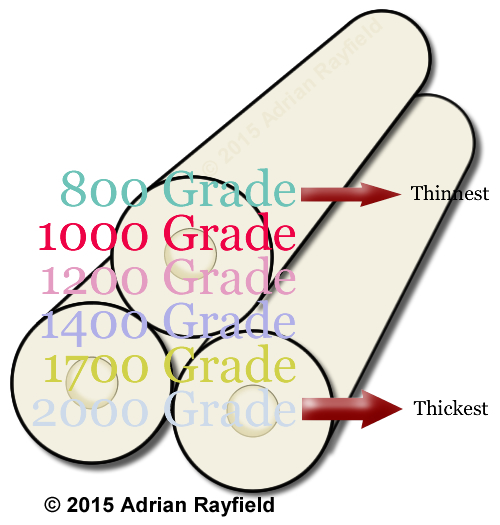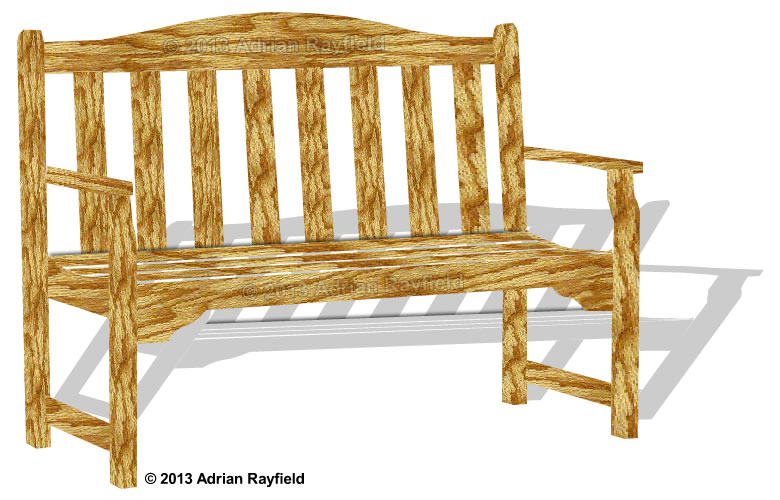Painting, decorating and home improvement tips blog
Lining paper, what is it?
Posted by Adrian
April 30th, 2019
Lining paper, what is it?
Lining paper has been traditionally used to produce a good, sound, smooth surface for wallpapering over, however it is now more popular to hang lining paper and emulsion over it.
Lining paper is used to remove any small imperfections on a wall or ceiling, it is not however a miracle cure, so preparation should always be done before hanging lining paper. It isn’t a substitute for plastering either.
Once all the holes and cracks have been filled, the walls or ceiling should be properly rubbed down and any filler should be sanded smooth and level. One this is done dust down the walls to remove any loose debris. You can seal any filler by either using a ‘size’ such as watered down wallpaper paste, or you can emulsion over the filler to help seal it off.

What thickness lining paper
Lining paper comes in different thicknesses, guages or grades, this refers to their weight. they start at 800 guage and go up to 2000 guage, it all depends on how thick you want it to be. Lining paper does offer some insulation qualities but there are also specialist papers for this.
A good mid-range lining paper to go for is 1200 or 1400 gauge, they aren’t too thin and not to thick to be hard to work with.
Can I paint lining paper
As mentioned above, lining paper is meant to produce a smooth background for wallpapering over, but yes you can paint over the lining paper once it is fully dried.
Cross lining, what’s that?
Cross-lining is where the lining paper is hung horizontally rather the vertically like traditional wallpapers, normally if you are going to be emulsioning over the lining paper you could hang it as you would wallpaper, vertically.
Once you have hung the lining paper you need to allow it to fully dry before you emulsion over it, this will take normally between 12 – 24 hours depending on drying conditions.
How to measure for lining paper
Before you buy lining paper or order wallpaper you need to know how much to buy, I have written an article on how to measure a room for wallpaper that explains how you need to do it. I have also written a wallpaper calculator so you can work out how many rolls of wallpaper you need to buy.
Cost of lining paper
With everyone having to tighten their belts these days, cost is a real factor when it comes to decorating, wallpaper can be very expensive if you plan to wallpaper the entire room, a way around this is to only do one wall, or a feature wall as it is known.
If however you wish to change the look of a room every couple of years, or you have pets or children that makes wallpaper not a viable option, lining paper and emulsion maybe the answer.
Once lining paper has been put up it can painted over and over again, saving costs in the long run as all that is required is a fresh new coat of emulsion. Also, if you then decide to wallpaper at a later date, you can do so over the emulsioned lining paper.
Tags: Cross lining, Emulsion, Feature Wall, Lining Paper, Paint, Wallpaper
Posted in Decorating Tips, Home Improvements, Resources | 3 Comments »
Spring clean – Cleaning your garden furniture
Posted by Adrian
April 20th, 2019
Spring clean – Cleaning your garden furniture
After the long cold winter we have just endured the garden looks a little worse for wear, but now we are getting some warmer spring like days it is the perfect time to get out into the garden. Apart from cutting back and pulling out the winter bedding plants and cutting the knee length grass, the garden furniture (unless kept in a shed or garage) will be in need of some tender loving care.
If you have plastic garden furniture you will have less work to do, if you have wooden furniture it does need looking after and the spring is the ideal time to do it, ready for the summer.
Plastic and metal garden furniture
If you have plastic or metal garden furniture all you really need to do is either pressure wash them off and dry them or use a bucket of warm soapy water and a sponge or cloth to wipe them over and remove the ground in winter dirt and grime. Check for condition, and check for rust on metal furniture and treat as required.
Wooden garden furniture
If you have wooden garden furniture you need to spend a little time cleaning and protecting them. A lot of garden furniture is simply oiled with teak oil to protect them from the elements. Some furniture may be painted or stained, but whatever they are protected with, a good clean is needed first.
Ideally a pressure washer is the perfect tool for the job, a quick blast from one of these and you will remove the grime, once you have washed the furniture down, let it dry before doing anything else to it. If you do not have a pressure washer, a bucket of warm soapy water and a nail brush and then a good rinse will do.
Check the condition of the furniture, has any of the seat slats rotted over the winter, if so you will need to replace them. The last thing you want is the mother-in-law to come round for a barbecue and sit on a chair and fall through it!
Once any repairs have been carried out you can get on with protecting the furniture, if you have stained wood give it a light rub down with sandpaper before coating it, if the furniture is painted a colour, with a gloss for example, you should treat this as you were painting any wood on your house. Give it a rub down, an undercoat and then a topcoat.
If you have furniture that is oiled rather than stained or painted, allow to dry after washing and rub it down to remove any ‘furry’ bits. Once it is smooth you can oil it with an oil such as teak oil, use a rag to apply the oil, leave to soak in and then apply another coat. Apply 3-4 coats for good penetration and protection. Allow 24 hours to dry before using the furniture.
Once you have cleaned your garden furniture you’re set for the summer. When it comes to the winter, if you have the space it is always best to put the furniture in a shed or garage but if this is not possible consider covering it up for the winter, it will mean one less job for next spring.

Tags: Garden Furniture, Metal Furniture, Plastic Furniture, Pressure Washer, Teak Oil, Wooden Furniture
Posted in Decorating Tips, Home Improvements | No Comments »
Putting up fencing
Posted by Adrian
March 24th, 2019
How to erect fencing
If you are planning to put up a new fence or simply replace an existing one, it is a good idea to tell your neighbours your plans and ask them to remove any breakable pots or tie back treasured plants and also ask them for permission to go onto their property if required.
You will also need to check the boundaries of your property and make sure you know which side is your fence and which is that of your neighbours. If you are replacing a fence then follow the old fence line but if you are putting up a new fence make sure you mark the boundary before starting. You may also want to check with the local planning authority you are allowed to erect a new fence and the height you are allowed to go to.
Before you buy
Remember that if you buy a 5 foot high fence, the post needs to be 7 feet tall as 2 feet will go into the ground, if you are going to use a gravel board and a 5 foot fence you will need allow for this also for the length of post.
This blog post deals with erecting a new fence with new panels and concrete posts but the principles are the same for wooden posts or metal spikes.
Tools for putting up a fence
You will need the following tools, it may also help to have a friend help you lift the posts and fence panels.
- A Spade
- Gardening Gloves
- A String line
- Fence panels
- Concrete Posts
- A Spirit Level
- Bags of PostFix (pre-mixed sand gravel and cement)
- A Tape Measure
- A Saw
- Gravel Boards (optional)
Getting Started
The first thing you need to do is mark the boundary, use a string line for this. Once you have your straight line you need to work out where the first post will go, this maybe up against the house. You now have to dig the holes and fix the posts.

Fixing the fence posts
You will need to dig holes for each post, each post should be 18-24 inches in the ground, and the hole should be around 3 times as wide as the post, as a guide the hole will be about the spades width and the spades blade and a half deep.
Once you have the correct size hole drop the post into the centre of the hole, upright it using the spirit level. At this point you can secure the post by dropping a couple of half bricks or large stones to wedge between the post and outer edge of the hole. If you have a friend helping you you can get them to hold it upright for you. Now tip half of the dry PostFix into the whole, then add water as per instructions on the bag. Keep checking the post is upright, then tip the rest of the PostFix into the whole and add water. Allow the given time to set. Do this with all the posts.
Make sure the gap between each post will allow for a fence panel, you can either stand the panel in it’s place whilst you fix the next post, or if you are using gravel boards, use these as spacers.
Fitting the fence panels
Once all the posts are fixed and the concrete is set, if you haven’t done so already and you are using them, fit your gravel boards. Next lift the fence panels into place by slotting them into the groove on the posts, you may need two people to do this. You may want to wear garden gloves to avoid splinters.
How to cut fence panels
If you need to cut the width off a fence panel because the gap between the posts are smaller than the panel, you will need to cut the panel down to fit. To do this carefully remove the end baton, then measure between the groves in the concrete posts and mark this on the fence, cut the top and bottom baton allowing for the width of the side baton. Then re-fix the side baton and finally cut down the edge of the side baton trimming the unwanted part of the panel. Your panel should now fit snugly between the two posts.
Tags: Concrete fence Post, Fence, Fence Panel, Fence Posts, Gardening, Gravel Boards, PostFix, Spade, Wooden Post
Posted in Home Improvements | No Comments »
